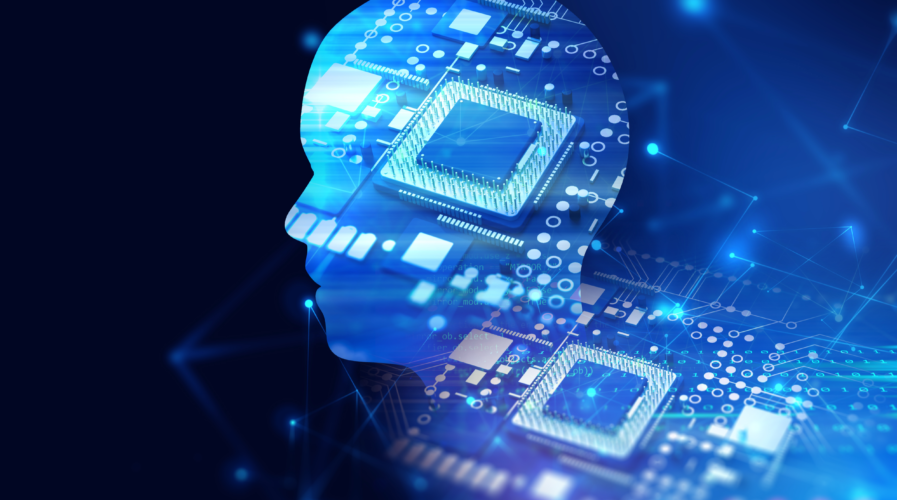
Source: Shutterstock
Human-AI collaboration key to NZ’s economic future – Accenture
- Artificial intelligence became more widely adopted by New Zealand organizations during pandemic restrictions
- A new report indicates that human/AI cooperation might be the answer to shoring up NZ’s economic future
In computer technology terms, artificial intelligence (AI) has been around for a relatively long time. The advantages of AI have been applied widely across a plethora of industries and has become so sophisticated that in New Zealand, a new report is signaling that AI will be critical to the country’s economic vitality.
The new research from global strategic consultancy Accenture highlights the unparalleled transformative powers that artificial intelligence can exert on business, given the technology’s abilities to sift through and analyze vast quantities of data.
Accenture New Zealand technology lead, Paul Hearnden, says that New Zealand businesses that are operating in a post-pandemic business climate are seeing the most tangible benefits from AI. “Over the past months, organizations in every sector have scrambled to meet the challenges of the COVID-19 pandemic. During this time, the value of human-machine collaboration has never been clearer,” says Hearnden.
Hearnden pointed to some of the AI-driven advancements that already existed prior to the pandemic but rose to prominence when they helped to fuel a swift shift to remote working arrangements for many large firms – including Accenture.
“In India, Accenture moved 150,000 people to work from home – in three days. In that time, every single person was contacted, and hardware was sourced and delivered to their homes. In the weeks that followed 150,000 people were checked on personally every day and given troubleshooting advice to improve network performance,” he remarked.
“Without AI, that would have been impossible. Allocating the communication and coordination tasks to bots meant the team was able to deliver the best support and advice to a huge workforce.”
The rapid uptake of AI solutions by NZ businesses really took off during the country’s COVID-19 response, powered by adoption across New Zealand’s sizable IT industry. There are over 21,000 technology companies in New Zealand, according to independent technology cooperative the New Zealand Tech Alliance, employing nearly 115,000 Kiwis and contributing 8% of the national GDP.
Accenture New Zealand’s Hearnden says that artificial intelligence applications could be seen as more efficient, once New Zealanders could observe how AI-powered solutions were making a difference in improving healthcare services, including NZ’s own national response.
“AI-powered chatbots are assisting health workers as they screen and triage patients, algorithms are helping healthcare suppliers reconfigure their supply chains, and AI is even helping in the race to find a vaccine.
“Here in New Zealand, Orion Health’s AI technology is being deployed to deliver an Algorithm Hub for government agencies, academic and healthcare organizations, and healthcare professionals,” he continued. “It’s a world-first, national solution for secure and timely scenario modeling, risk prediction, forecasting, and planning throughout New Zealand’s COVID-19 response.”
Accenture’s 2020 Digital Health Technology Vision survey took place before the pandemic and found that 79% of respondents believed that collaboration between humans and machines will be critical to future innovation.
Once looked at as merely enhancing automation, AI has since progressed (grown?) to be a powerful collaboration tool between man and machine. Even companies that were reluctant to embrace AI before the pandemic, now have to admit that some of the benefits of AI (and its related tech like machine learning, natural language processing, and computer vision) to improving operational efficiency are unquestionable.
“Workers, governments, and the public are [now] seeing AI in the best possible light – and businesses have never had a better opportunity to deploy AI tools,” commented Hearnden. “But as they do so, they must make sure to design their tools in a human-centric way so that workers remain on board.”
While AI has been helping business leaders solve the challenges of a reduced workforce, the adoption of AI by employees remains the biggest barrier to businesses scaling the technology. Hearnden believes that having human-focused, intuitively-designed AI software can go a long way towards reducing adoption barriers for staff.
“Thankfully, many new AI tools are very intuitive for humans to use because of technologies such as natural language processing and computer vision,” he stated.
If Gartner’s Hype Cycle report on emerging tech trends is to be believed, various incarnations of AI will dominate the next decade of technological innovation. The capabilities of AI-augmented development, responsible AI, explainable AI, embedded AI, and more are being unlocked right now, and their applications will define organizational efficiency in the coming years.
“If organizations can get this next stage of the AI journey right and deploy the tools at scale in a way that enables true human-machine collaboration, then the sky is the limit,” noted Hearnden. “Businesses will be able to sweep away the constraints that have traditionally held AI back and open whole new possibilities for their company and workers.”
READ MORE
- The criticality of endpoint management in cybersecurity and operations
- Ethical AI: The renewed importance of safeguarding data and customer privacy in Generative AI applications
- How Japan balances AI-driven opportunities with cybersecurity needs
- Deploying SASE: Benchmarking your approach
- Insurance everywhere all at once: the digital transformation of the APAC insurance industry


